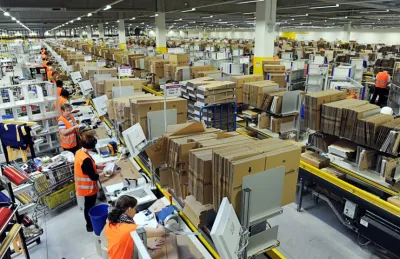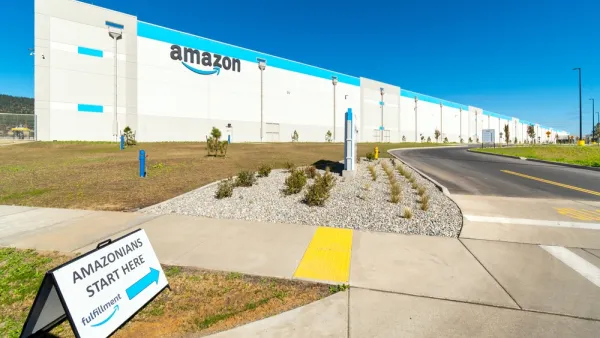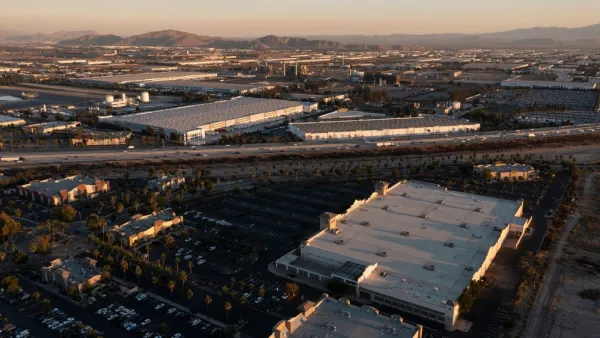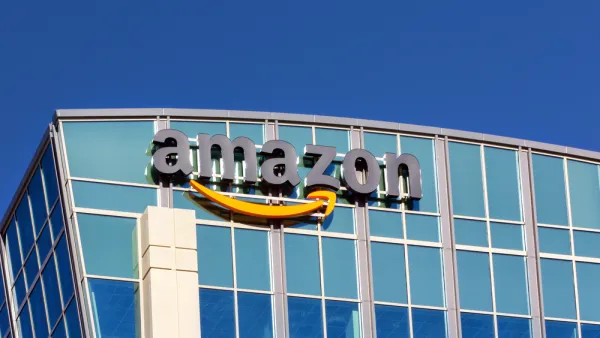The e-commerce giant has been quietly buying up massive swaths of property as the company works to reduce shipping times as dramatically as possible.

A Bloomberg article by Spencer Soper and Natalie Wong explains the growth of Amazon’s real estate holdings. “Starting about three years ago, the Seattle-based colossus quietly began searching for property in key US markets such as Southern California, Texas, Illinois, Florida and the Bay Area. Between 2020 and 2022, Amazon tripled the amount of built industrial space it owns in North America, according to company filings.”
As the authors note, “It’s a potentially risky strategy that exposes Amazon to the vagaries of the industrial real estate market. The company also overbuilt during the pandemic and is saddled with too much warehouse space now that the surge in online shopping has decelerated.” Yet “Executives remain committed to securing land in the right locations to fulfill founder Jeff Bezos’ vision of making an online purchase as instantly gratifying as a trip to the store.”
However, “Buying land is risky. Developing it is even more so because Amazon itself must negotiate the local bureaucracy and politics. But executives feel they have no choice, according to people familiar with the strategy, because the new generation of fulfillment centers are several orders of magnitude more complicated than the 40-foot boxes currently dotted around the country.”
According to the article, the company is already hedging its bets, slowing down their plans as online sales slow and a recession looms on the horizon. “The question now is how Amazon will adapt a boom-era strategy to current economic conditions.”
FULL STORY: Amazon Builds Property Empire, Quietly Buying Land Across the US

Analysis: Cybertruck Fatality Rate Far Exceeds That of Ford Pinto
The Tesla Cybertruck was recalled seven times last year.

National Parks Layoffs Will Cause Communities to Lose Billions
Thousands of essential park workers were laid off this week, just before the busy spring break season.

Retro-silient?: America’s First “Eco-burb,” The Woodlands Turns 50
A master-planned community north of Houston offers lessons on green infrastructure and resilient design, but falls short of its founder’s lofty affordability and walkability goals.

Test News Post 1
This is a summary

Analysis: Cybertruck Fatality Rate Far Exceeds That of Ford Pinto
The Tesla Cybertruck was recalled seven times last year.

Test News Headline 46
Test for the image on the front page.
Urban Design for Planners 1: Software Tools
This six-course series explores essential urban design concepts using open source software and equips planners with the tools they need to participate fully in the urban design process.
Planning for Universal Design
Learn the tools for implementing Universal Design in planning regulations.
EMC Planning Group, Inc.
Planetizen
Planetizen
Mpact (formerly Rail~Volution)
Great Falls Development Authority, Inc.
HUDs Office of Policy Development and Research
NYU Wagner Graduate School of Public Service




























